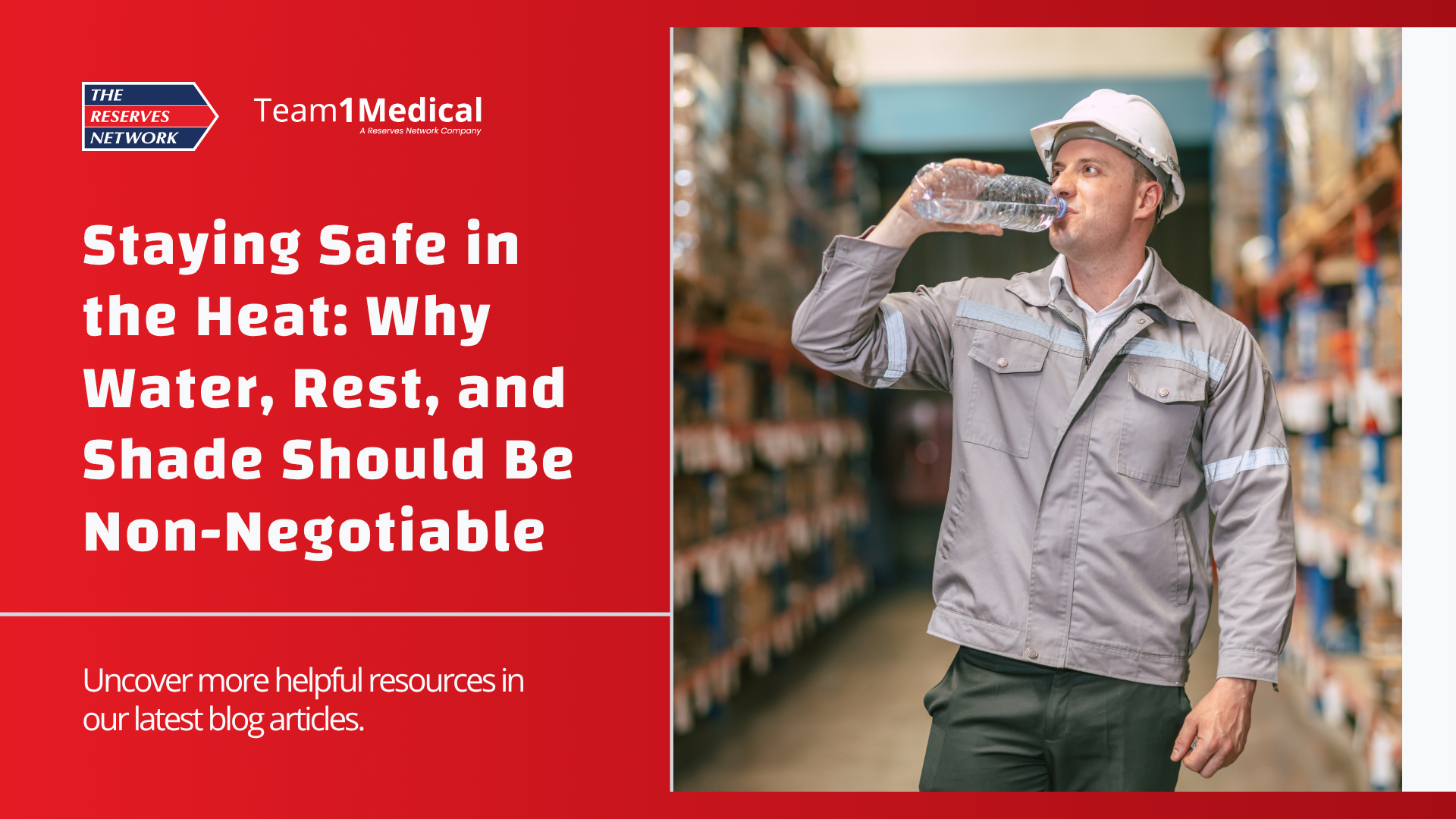
As National Safety Month comes to a close, we turn our focus to a critical but often underestimated risk in the healthcare workplace—heat-related illness. As temperatures rise, so do the risks for healthcare professionals in environments such as hospitals, clinics, long-term care facilities, labs, and home health settings.
Heat illness doesn’t only occur outdoors. It can happen indoors in poorly ventilated areas, during long shifts in full PPE, or in facilities where climate control may be inconsistent. When the body is unable to cool itself effectively, it can lead to serious health issues such as heat exhaustion, heat cramps, or in the most severe cases, heat stroke—which can be life-threatening if not treated immediately.
Common contributors to heat-related illness in healthcare include prolonged wear of PPE or uniforms, high-stress or high-activity roles, lack of hydration, and insufficient rest. New or returning staff are especially vulnerable if they haven’t yet acclimated to working in warmer or more demanding conditions.
According to OSHA, heat-related illness is preventable when three fundamental elements are in place: water, rest, and shade. This approach forms the core of a safe, heat-aware work environment.
Water
Healthcare workers should drink water frequently—about one cup every 20 minutes—even before they feel thirsty. Relying on thirst alone isn’t enough to maintain proper hydration, especially during long, physically or mentally demanding shifts. Healthcare employers should ensure easy access to clean, cool water across all units and departments, while also discouraging energy drinks or sugary beverages that may contribute to dehydration.
Rest
Scheduled breaks are essential. Resting in a shaded or air-conditioned space allows the body to cool down and recover. The frequency and duration of breaks should increase with the intensity of the work and the temperature of the environment. In high-demand healthcare settings, breaks aren’t just a benefit—they’re a necessity for both safety and performance.
Shade (or A/C)
In indoor clinical environments, it’s vital to maintain proper airflow and air conditioning. Breakrooms or respite areas should be cool and comfortable, offering healthcare professionals a place to recharge. For home healthcare professionals or mobile workers, access to air-conditioned vehicles or shaded outdoor areas can help reduce heat exposure.
A successful heat safety strategy also includes training and communication. Healthcare staff should be trained to recognize the early signs of heat stress in themselves and their coworkers—symptoms like dizziness, headaches, nausea, confusion, and fatigue should never be ignored. Encouraging a buddy system and fostering open communication can help ensure concerns are addressed before they escalate.
While employers are responsible for creating heat-safe environments, healthcare workers also play a key role in protecting themselves and each other. They can reduce their risk of heat illness by:
- Drinking water consistently throughout the day—not just during breaks
- Avoiding caffeine and sugary drinks that contribute to dehydration
- Taking rest breaks when needed and seeking cool or shaded spaces
- Wearing lightweight, breathable clothing beneath PPE where possible
- Being alert to early warning signs of heat stress in themselves and coworkers
- Speaking up immediately if feeling unwell or overheated
Preparedness and personal responsibility go hand in hand. By staying hydrated, knowing when to rest, and using cool spaces effectively, healthcare workers can stay focused, energized, and safe—even under the pressures of peak summer conditions.
Employers in the healthcare field have a responsibility to implement a heat safety plan tailored to their workforce. This includes adjusting schedules around the hottest parts of the day, gradually increasing workloads for new or returning employees, and emphasizing hydration and recovery time. These steps are not just about compliance—they’re about protecting people who care for others.
At Team1Medical, safety is built into everything we do. We partner with healthcare employers who take every measure to protect their teams, and we provide resources to ensure our associates are prepared for the environments in which they work. As National Safety Month concludes, we reaffirm our year-round commitment to safe, supportive, and productive healthcare workplaces.


Leave a Reply